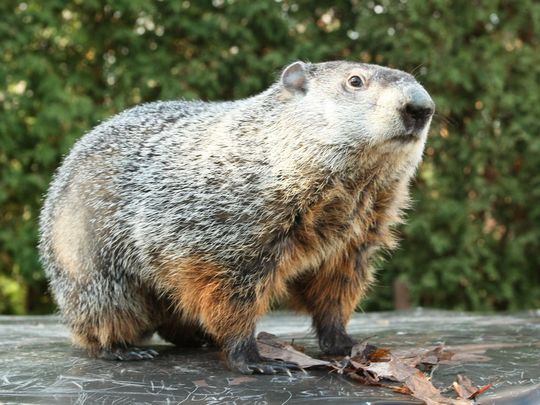By Beth Pinyeard
For the Opelika
Observer
With January coming to end later this week, that can mean only one thing – Groundhog’s Day is around the corner!
Groundhog’s Day is celebrated every year on the second day of February. The official groundhog lives in Punxsutawney, Pennsylvania. His name is Punxsutawney Phil.
According to legend, if Punxsutawney Phil sees his shadow (the day is bright and sunny) there will be six more weeks of winter weather. If he does not see his shadow (the day is overcast), there will be an early spring.
On Feb. 2, Punxsutawney Phil comes out of his burrow at Gobbler’s Knob-in front of thousands of followers from all over the world-to predict the weather for the rest of the season.
One thing children love to do is to act like an amateur meteorologist. Have your child, as young as three years old, look outside and predict what they think the weather will be like that day. This can make for early morning conversational learning and using appropriate thinking skills as children take what they have learned to decide what clothes they need to wear that day or do I need an umbrella.
Children at home and in the classroom love to be weather helpers. They love to look outside and draw what the weather looks like. Children love to study the different shapes of clouds such as cumulus which look like cotton candy, cirrus clouds which look feathery, and stratus clouds which are black and gray. An all-time favorite children love to do is to make out shapes out of clouds. You would be surprised at how creative your little one is!
Children love to observe and learn about different kinds of precipitation of rain, sleet, snow and hail. Children love to do experiments with evaporation by wetting a surface like a blackboard and watch the water disappear. They wonder where the water disappears! This gives the parents the opportunity to talk about the water cycle in which water drops evaporate in the air and go up into clouds to make different forms of evaporation which falls back to the earth.
Outside thermometers are valuable teaching tools of how cold or hot it is in degrees.
Going back to our groundhogs, you can explain hibernation. Ask your young child what they like to do when winter comes and weather becomes really cold? We go on with our business despite how cold it is outside but many animals choose to stay home and sleep through the entire season. We call this hibernation. Bears, groundhogs, frogs, turtles, bats, snakes, etc. all hibernate.
When talking about shadows, young children love Robert Louis Stevenson’s poem on “My Shadow.” I remember how much I loved this poem. Children love to act this out and they will want you to read it over and over! Simply turn off the lights and get a flashlight out to create hours of fun!
“My Shadow” by Robert Louis Stevenson:
I have a little shadow that goes in and out with me,
And what can be the use of him is more than I can see.
He is very, very like me from the heels up to the head;
And I see him jump before me, when I jump into my bed.
The funniest thing about him is the way he likes to grow,
Not at all like proper children, which is always very slow;
For he sometimes shoots up taller like an India-rubber ball,
And he sometimes goes so little that there’s none of him at all.
He hasn’t got a notion of how children ought to play,
And can only make a fool of me in every sort of way.
He stays so close behind me, he’s a coward you can see;
I’d think shame to stick to nursie as that shadow sticks to me!
One morning, very early, before the sun was up,
I rose and found the shining dew on every buttercup;
But my lazy little shadow, like an arrant sleepy head,
Had stayed at home behind me and was fast sleep in bed.
I wonder if the Groundhog will see its shadow? The children will be watching!

